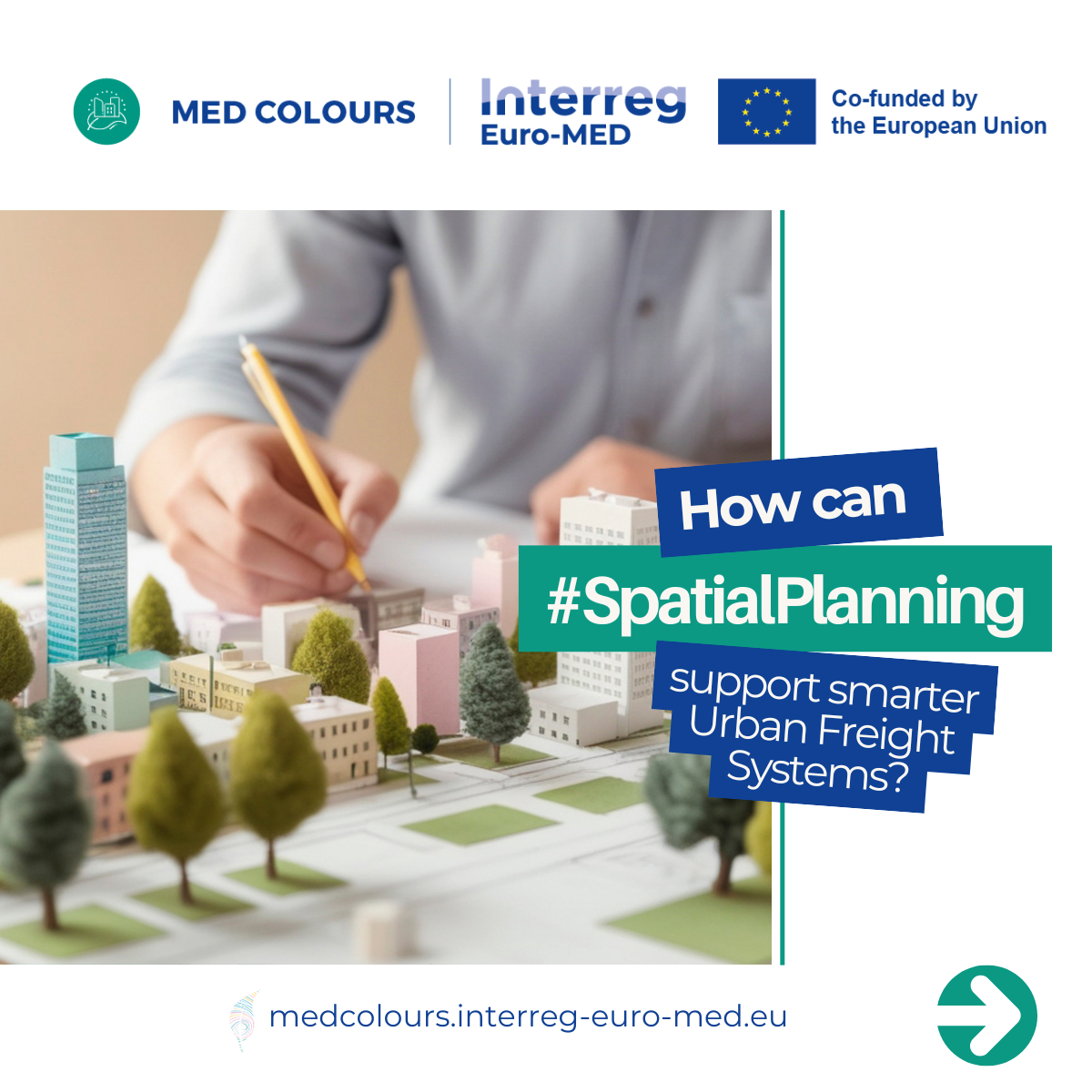New episode of the MED COLOURS column dedicated to the topic of resilient and sustainable urban logistics. Once a month, we suggest articles, insights and studies of particular interest to the topics related to the project, with the aim of increasing knowledge related to the topics, and stimulating debate and knowledge exchange, which are essential ingredients for the achievement of our project goals.
This month’s focuse is on: how can spatial planning support smarter urban freight systems?
The study “Integrating city logistics in spatial planning ‑ creating the conditions for decarbonization and hubs” by Bram Kin & Hans Quak (2024) explores how the physical and policy environment of cities can be leveraged to make urban logistics not only greener, but also more efficient and space-sensitive.
🔍 Key insights from the study:
- Urban logistics remains poorly integrated into planning and zoning, yet curbside space, hubs and loading areas are central to city life.
- Embedding logistics considerations into urban design can support decarbonisation, efficiency, and liveability.
- Four case studies demonstrate opportunities: planning urban consolidation centres close to city cores, integrating loading/unloading zones in public spaces, and aligning building projects with delivery needs.
- A new research agenda calls for reframing urban freight as part of infrastructure and urban form rather than just traffic.
Why this matters for the MED COLOURSProject?
As we advance pilot actions and develop Sustainable Urban Logistics Plans (SULPs) in our six cities (Livorno, Cesena, Thessaloniki, Koper, Lisbon and Lyon), we’re not just looking at low-emission vehicles or smart routing. We’re also asking: how is the city built, and how do the spaces into which goods move support, or hinder, efficient, low-impact logistics?
This study gives us a fresh lens: consider loading/unloading logistics, hub placement, shared spaces and urban form as part of the sustainability equation.
Want to dig deeper? Find the full article here.


